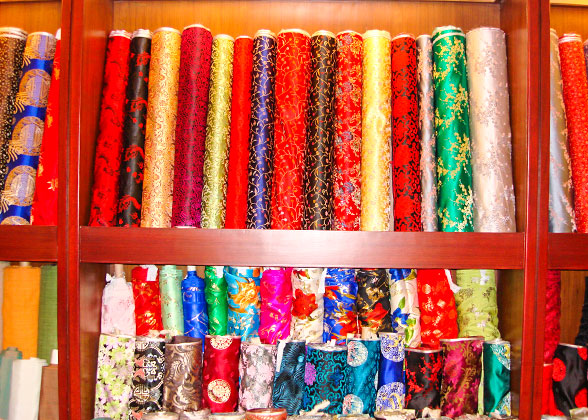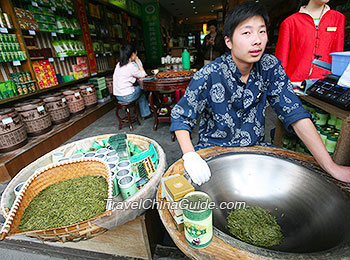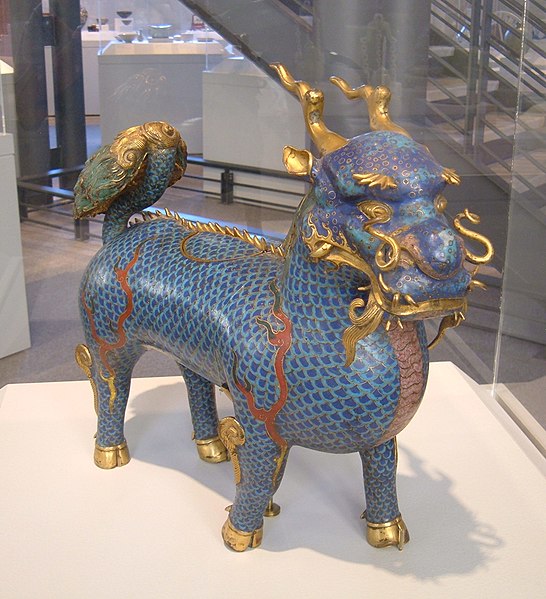Cheryl and Bob: China 2011
They're at it again...
Mom and Dad set their sites on China as the next installment in their adventures. Mom bought some text messages and is sending me updates, which I'm supposed to share with "everybody." I have been forwarding updates to sisters and aunts and cousins, but I thought a blog post might do more justice.
Stay tuned... there are many adventures ahead for them in this trip.
Wednesday, October 12, 2011
Sixth Update: October 12
Sixth Update: October 12
Me: no updates since 10/10. did not get email. how are things?
Mom: Emails not going out for us only. Beautiful scenery. In mountains bamboo Saw downtown Shanghai last night - was like 100 Times Squares.
Fifth Update: October 11
Fifth Update: October 11, by Facebook
======================================================
Off to yet another day of shopping in Hangzhou. This time for tea! Also visiting a temple and then off to shanghai!
======================================================
Hangzhou Shopping
One of China's most dynamic cities, Hangzhou is a pearl in the Yangtze River Delta. Shopping in Hangzhou is no longer limited to local specialties such as China silk, tea, and lotus root starch. Today modern offerings abound in various shops, stores, supermarkets, and plazas that crowd the commercial center.
Hangzhou is well known for producing excellent silks, including satins. Throughout its long history, a variety of Hangzhou silks and satins have been sold throughout the world. The best place for purchasing silk in Hangzhou is atHangzhou Silk City, the biggest silk wholesale and retail market in China with more than 600 silk enterprises dealing in a wide variety of pure silk fabrics, garments, handicraft articles, scarves, and ties. The shoppers there not only do business on the mainland, but also export their silk products to Europe, America, Australia, Hong Kong, Macau, and Taiwan. The market is distinguished as offering standardized management, reliable quality, and reasonable prices.
More from same article.
Second link, Where to shop.
One of China's most dynamic cities, Hangzhou is a pearl in the Yangtze River Delta. Shopping in Hangzhou is no longer limited to local specialties such as China silk, tea, and lotus root starch. Today modern offerings abound in various shops, stores, supermarkets, and plazas that crowd the commercial center.
Hangzhou is well known for producing excellent silks, including satins. Throughout its long history, a variety of Hangzhou silks and satins have been sold throughout the world. The best place for purchasing silk in Hangzhou is atHangzhou Silk City, the biggest silk wholesale and retail market in China with more than 600 silk enterprises dealing in a wide variety of pure silk fabrics, garments, handicraft articles, scarves, and ties. The shoppers there not only do business on the mainland, but also export their silk products to Europe, America, Australia, Hong Kong, Macau, and Taiwan. The market is distinguished as offering standardized management, reliable quality, and reasonable prices.
More from same article.
Second link, Where to shop.
Tuesday, October 11, 2011
Fourth Update: Monday, October 10
Monday, October 10
Flew to Shanghai 3:30 AM bus to sudzong to leaning temple and then a boat ride on canal.
==================================================================
Shanghai
Shanghai, Hu for short, is a renowned international metropolis drawing more and more attention from all over the world. Situated on the estuary of Yangtze River, Shanghai serves as the most influential economic, financial, international trade, cultural, science and technology center in East China. Also it is a popular tourist destination, visitors can sense the pulsating development of modern China.
In addition to its modernization, Shanghai's multicultural flair endows Shanghai with a unique glamour. Here, one finds the perfect blend of cultures, the modern and the traditional , and the western and the oriental. New skyscrapers and old Shikumen lanes together draw the skyline of Shanghai. Western customs and Chinese traditions intertwined, form Shanghai's culture, making a visitor's stay truly memorable.
More here.


Suizhong District
Google Map of Suizhong
Leaning Temple
The Huqiu Tower, or Yunyan Pagoda and Tiger Hill Pagoda, is a Chinese pagoda situated at Changmen in Suzhou City, Jiangsu Province. It has several other names, including the 'Leaning Tower of China' (as referred to by historian O.G. Ingles) and the Yunyan Temple Tower. The tower was built in the later period of the Five Dynasties (907-960 CE), completed by the second year of the Song Dynasty. The tower rises to a height of 47 m (154 ft). It is a seven-story octagonal building built with blue bricks. In more than a thousand years the tower has gradually slanted due to forces of nature. Now the top and bottom of the tower vary by 2.32 meters. The entire structure weighs some 7,000,000 kilograms (15,000,000 lb), supported by internal brick columns. However, the tower leans roughly 3 degrees due to the cracking of two supporting columns. More here.

Third Update: Sunday, October 9
Sunday, October 9
Heaven's temple, meal with local family, pearl factory, Hot weather, people nice. GPS will not work. No talk of politics allowed. Great food. on to Shanghai!
=================================================
The Temple of Heaven is a worthwhile visiting place in Beijing. It is much bigger than the Forbidden City and smaller than the Summer Palace with an area of about 2,700,000 square meters. The Temple was built in 1420 A.D. during the Ming Dynasty to offer sacrifice to Heaven. As Chinese emperors called themselves 'The Son of Heaven' ,they dared not to build their own dwelling,'Forbidden City' bigger than a dwelling for Heaven.
The Temple of Heaven is enclosed with a long wall. The northern part within the wall is semicircular symbolizing the heavens and the southern part is square symbolizing the earth. The northern part is higher than the southern part. This design shows that the heaven is high and the earth is low and the design reflected an ancient Chinese thought of 'The heaven is round and the earth is square'.
More here.

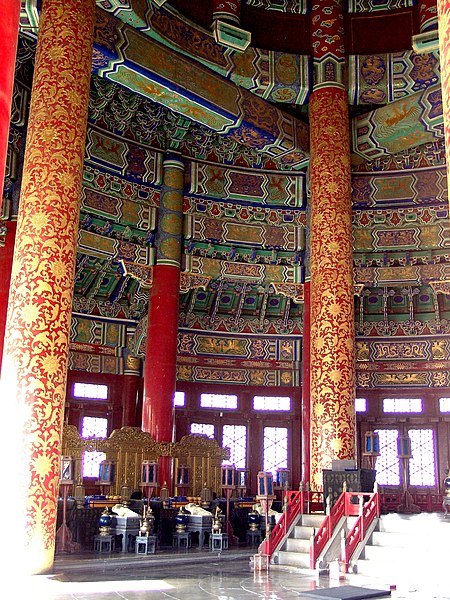

Monday, October 10, 2011
Second Update: Saturday, October 8
Saturday October 8
Great wall, Peking duck, cloisenne and jade factory. 10 dishes of food at each meal -- beer and rice wine. Great weather. Today summer palace, rickshaw tour, pearl factory. Old town, acupuncture.
=======================================================================
Peking Duck

Jade



Summer Palace
"The Summer Palace in Beijing – first built in 1750, largely destroyed in the war of 1860 and restored on its original foundations in 1886 – is a masterpiece of Chinese landscape garden design. The natural landscape of hills and open water is combined with artificial features such as pavilions, halls, palaces, temples and bridges to form a harmonious ensemble of outstanding aesthetic value." Full Text from Unesco World Heritage List



Rickshaw
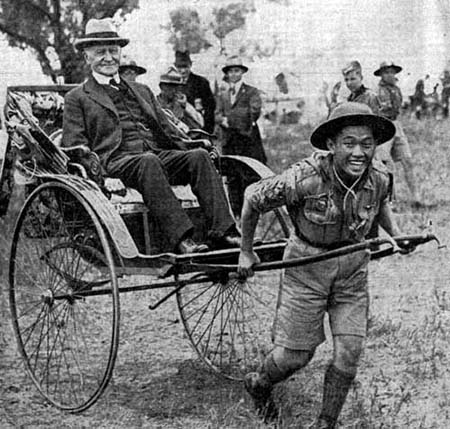
These days mostly by bike:

Acupuncture

The first update, Friday October 7
Friday October 7
Everything OK. Tienanmen Square, forbidden city Friday. Today the Wall, Ming tombs. Food good. Beijing lights like NYC.
====================================================================
Tienanmen Square:
A great page about the square, with pictures and maps
"Tian'AnMen Square is a very large plaza at the center of Beijing, named after TianAnMen Gate ('Gate of Heavenly Peace') which sits to its north, separating it from, and connecting it to, the Forbidden City."


The Forbidden City:
Another good page about the Hidden City
"In the early 1400s, the third Ming Emperor, YongLe, moved the capital of China to Beijing. In 1406, he began construction of a new 'Forbidden City' that would include an imperial palace complex of vast proportions - a grand design.
Located at the exact center of the ancient city of Beijing, the palace was the home and center of power for 24 emperors during the mid to later Ming and Qing dynasties."



The Great Wall
Wikipedia page about the Great Wall
"The Great Wall of China is a series of stone and earthen fortifications in northern China, built originally to protect the northern borders of the Chinese Empire against intrusions by various nomadic groups. Several walls have been built since the 5th century BC that are referred to collectively as the Great Wall, which has been rebuilt and maintained from the 5th century BC through the 16th century."
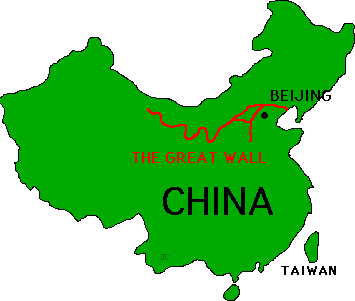

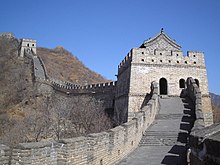
Ming Tombs
"The Ming Tombs form the most extensive burial complex of any chinese dynasty and are one of the finest preserved pieces of 15th century chinese art and architecture. The Ming Tombs were listed as a UNESCO World Heritage Site in August 2003 along with other tombs under the 'Imperial Tombs of the Ming and Qing Dynasties' designation"


Beijing Lights

Everything OK. Tienanmen Square, forbidden city Friday. Today the Wall, Ming tombs. Food good. Beijing lights like NYC.
====================================================================
Tienanmen Square:
A great page about the square, with pictures and maps


The Forbidden City:
Another good page about the Hidden City
"In the early 1400s, the third Ming Emperor, YongLe, moved the capital of China to Beijing. In 1406, he began construction of a new 'Forbidden City' that would include an imperial palace complex of vast proportions - a grand design.
Located at the exact center of the ancient city of Beijing, the palace was the home and center of power for 24 emperors during the mid to later Ming and Qing dynasties."



The Great Wall
Wikipedia page about the Great Wall
"The Great Wall of China is a series of stone and earthen fortifications in northern China, built originally to protect the northern borders of the Chinese Empire against intrusions by various nomadic groups. Several walls have been built since the 5th century BC that are referred to collectively as the Great Wall, which has been rebuilt and maintained from the 5th century BC through the 16th century."


Ming Tombs
"The Ming Tombs form the most extensive burial complex of any chinese dynasty and are one of the finest preserved pieces of 15th century chinese art and architecture. The Ming Tombs were listed as a UNESCO World Heritage Site in August 2003 along with other tombs under the 'Imperial Tombs of the Ming and Qing Dynasties' designation"


Beijing Lights

Subscribe to:
Posts (Atom)

